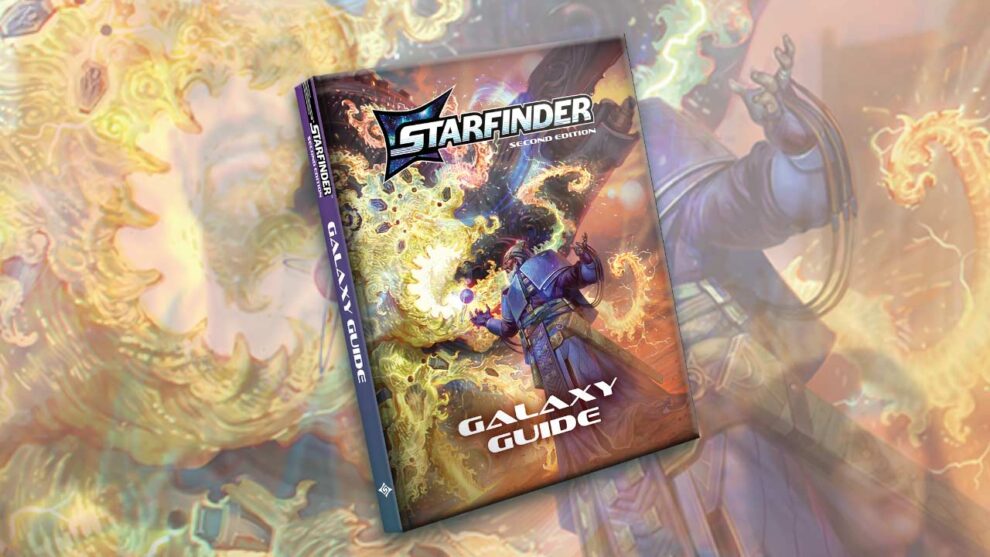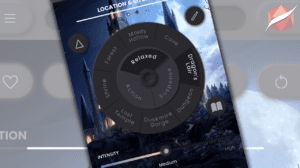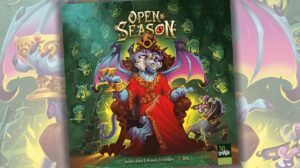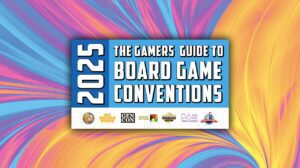Disclosure: Meeple Mountain received a free copy of this product in exchange for an honest, unbiased review. This review is not intended to be an endorsement.
It isn’t often that a supplemental sourcebook releases for a tabletop roleplaying game before the core rulebook of said game has hit store shelves. But Paizo’s Starfinder Galaxy Guide is an interesting corner case given its connection to the ruleset for Pathfinder Second Edition; both games are compatible under the same system so technically even though the Starfinder Second Edition Core Rulebook will serve as Paizo’s flagship Gen Con release this year, the Starfinder Galaxy Guide is already playable. Let’s find out what it has to offer.
Starfinder Galaxy Guide Overview
If you’re going to have a supplemental book release before its core rules, you could do worse than releasing a book that offers a solid foundation and introduction to the world of Starfinder, whose main galaxy is known as Desna’s Path. To players of Starfinder First Edition, this world is familiar. Previous sourcebooks like Near Space and Ports of Call contain some of the information and worldbuilding that you’ll find within these pages. Starfinder Galaxy Guide is not a carbon copy of those books, however, so pump the brakes before making the determination that this book isn’t worth your time.
Nearly half the book is dedicated to adventure frameworks. Gamemasters—this section is for you. Content like this is primarily geared towards homebrewers whipping up their own stories, but even if you strictly run published adventures this section should not be ignored. You’ll find adventure hooks, campaign starters, and hot spots grouped by your main campaign mood. Are you running something dystopian? Launching your players into the aftermath of a misunderstanding orchestrated by a rogue AI known as the Trespasser is a fitting set piece filled with intrigue. Want your game filled with horror? Perhaps setting the stage aboard a mausoleum ship like Keldor’s Pride would fit the bill.
What I appreciate about this style of content is that so much information is given, but enough specifics are lacking to allow players to tell the story of what happened or what happens next. That’s the main point of these games—to tell stories. Just give me enough of a springboard and my table will handle the rest. Plus, there is a nice selection of character Backgrounds for each type of adventure, from Cloud Chemists to Quantum Clones.
The second main section of the book outlines four major Ports of Call in Desna’s Path—Absalom Station, The Idari, The Second City, and Starlance. This section is much shorter, with only a handful of pages dedicated to each port. It gives a bit of background information before, again, gifting readers with some campaign starters, one-shot ideas, and long campaign hooks. I’ve already seen enough of Absalom Station, but I was more than pleased with the content on the other three ports. My eyes were particularly drawn to The Second City, which includes a short blurb about the mystery of its sister planet, Invemi-1 and the black miasma surrounding it.
The third major section in the Starfinder Galaxy Guide is a brief outline of the major and minor factions in the Starfinder universe. You’ll find megacorporations like Abadarcorp, the reinvented Hellknights who hearken back to old Golarion and the World Wound, as well as Xenowardens who protect ecosystems across the galaxy from falling to corporate greed, reckless terraforming, and more.
Ancestries fill the final forty pages, as the Starfinder Galaxy Guide includes the malleable Astrazoans, the big-brained Contemplatives, loyal Dragonkin, aquatic Kalo, winged Sarcesians, and the lupine Vlaka. These are extensive entries complete with Heritage options and Ancestry Feats, along with all of the other mechanical information you need to create a character with one of these Ancestries.
Finally, the book includes a fold-out, double-sided map featuring the Pact Worlds and Desna’s Path. It’s a much improved visual reminder for the structure of the worlds in which you tell your stories. And, frankly, the larger version is much needed since the text on the corresponding map in the book is simply too small to be legible without 40/20 vision.
Starfinder Galaxy Guide: A Blank Slate
Starfinder Second Edition is starting fresh under the Open RPG Creative License in the same way that Pathfinder Second Edition got a spin in the form of a remaster. Obviously I can’t speak to the core rules of the game until Gen Con, but the Starfinder Galaxy Guide is a fitting preamble to its release.
I’ve heard it countless times—situations where a player picks up a new TTRPG like Starfinder filled with excitement. They want to play the game! But if they don’t want to run a published adventure, they need to homebrew their own story, which can lead these players down a never-ending rabbit hole of unfulfilled ideas or too much detail. You don’t need to spend hundreds of hours crafting a bulletproof narrative filled with minutia like a one-off shopkeeper’s backstory that will almost assuredly never be learned by the players.
Enter the Starfinder Galaxy Guide.
Pick any one of the book’s many plot hooks and you’re off to the races. Read a couple of pages to establish background and get the mind swirling with more ideas, but you’ll be ready to hit the table running. In fact, releasing this book before the Starfinder Second Edition Core almost seems like a boon, because Gamemasters have more than a month to absorb information about pertinent locations so that they have something to run immediately when the game officially releases.
Of course, you can also use the included Fantasy-themed campaigns to hook this content up with the Pathfinder Second Edition ruleset and not have to wait at all. Plenty of options.
I don’t pretend to be a mechanical expert in terms of optimization or the best skills or feats for players—not in Pathfinder Second Edition and certainly not in Starfinder Second Edition ahead of its release—but the included Ancestries in this book offer a much more varied starting foundation of core Ancestries at launch than First Edition had. Astrazoan is the changeling/Expanse mashup that will be a major hit for players gravitating towards social shenanigans. Augmented Kalo equipped with body modifications to survive and thrive in a non-aquatic environment is a story that practically writes itself. And who doesn’t want to be a Dragonkin? It’s a strong lineup with versatility accommodating to a multitude of playstyles.
My only real gripe with the book is that it’s presented as a Galaxy Guide but it really covers such a subset of Desna’s Path that it seems disingenuous. A better name for this book might be the Starfinder Extraterrestrial Exploits or Starfinder Adventure Apparatus, but it’s really a minor quibble. Even considering the sourcebooks from Starfinder First Edition and the associated adventure paths, the Starfinder universe is so vast that it’s literally impossible to cover everything. Especially with the planet generating tools.
The Starfinder Galaxy Guide will be an invaluable tool for Starfinder Second Edition Gamemasters as it points them in interesting directions to tell memorable stories. Players will appreciate having more character options when August rolls around and they can finally get their hands on the core rules. And with included destinations like CityMcCityFace, the world of Starfinder is closer to the real world than you might think.











Add Comment